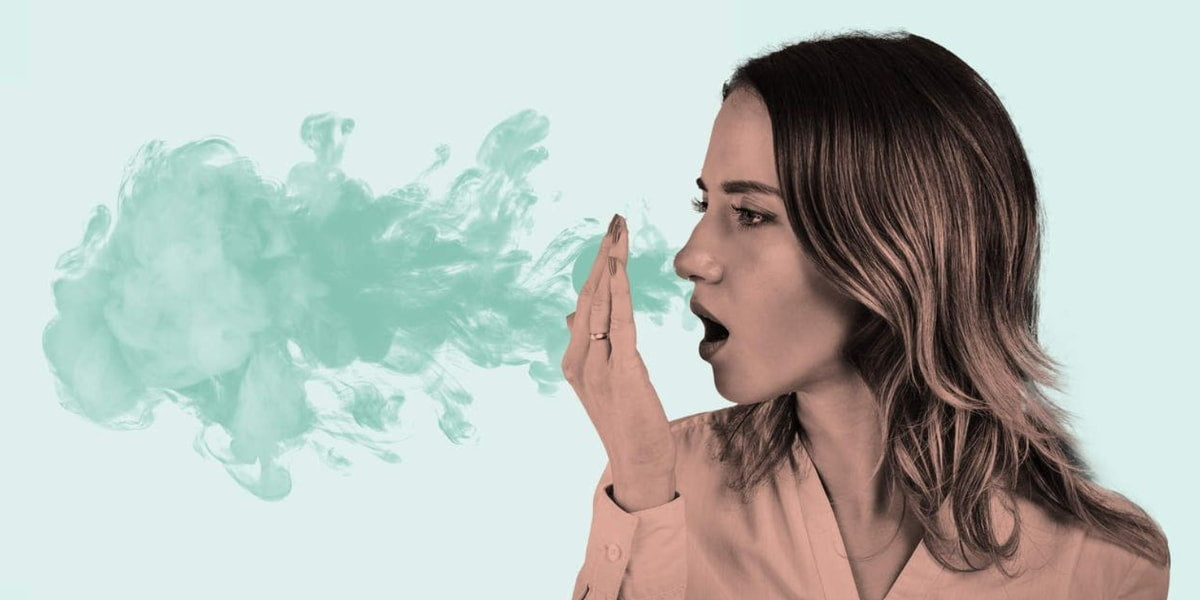Bad breath, also known as halitosis, is something most of us deal with at some point, and for millions of Australians, it’s a daily frustration.
It can stem from anything, from dry mouth and diet to less-than-perfect brushing habits or even health conditions. Whatever the cause, the result is the same: a knock to your confidence.
While brushing and flossing lay the foundation for fresh breath, finding the best mouthwash for bad breath can take your oral care routine to the next level. The right rinse doesn’t just mask odours. It helps tackle the root cause.
In this guide, we’ll show you how to choose the best mouthwash for bad breath, which ingredients actually matter and how to find the perfect match for your specific needs, whether you’re after alcohol-free, hydrating or clinically proven options.
Why Bad Breath Happens
Before choosing a mouthwash, it's important to understand why bad breath occurs in the first place. The most common causes include:
-
Bacterial buildup on the tongue and between teeth
-
Dry mouth (xerostomia), which reduces saliva’s natural cleaning effect
-
Food particles trapped in the mouth or tonsils
-
High-protein diets or certain foods like garlic and onion
-
Medical conditions, such as sinus infections, acid reflux or gum disease.
Combating halitosis often means targeting bacteria, increasing saliva production and neutralising odours, and that’s where the right mouthwash comes in.
What Makes a Mouthwash Effective Against Bad Breath?
Not all mouthwashes are created equal. Some offer a quick burst of minty freshness but fail to deal with the underlying cause.
Others are therapeutic rinses, clinically designed to kill odour-causing bacteria and neutralise compounds responsible for halitosis.
Here are the most effective active ingredients to look for:
1. Chlorine Dioxide or Sodium Chlorite
These are powerful oxidising agents that break down VSCs or the smelly compounds responsible for halitosis. They also help neutralise bacteria in hard-to-reach areas of the mouth, offering longer-lasting freshness.
2. Cetylpyridinium Chloride (CPC)
An effective antimicrobial that helps kill bacteria linked to gum disease and persistent bad breath. It’s found in options like KForce Detox Rinse.
3. Zinc Compounds
Zinc doesn’t just freshen breath. It binds with and neutralises sulphur gases while also slowing the growth of bacteria. A solid choice for long-term odour control.
4. Essential Oils (Eucalyptus, Menthol, Thymol, Peppermint)
Used in mouthwashes like KForce Mouthwash, these natural oils have antibacterial properties. Just keep in mind, they can be a bit too strong for people with sensitive mouths.
5. Aloe Vera or Enzymes
Perfect for those with dry mouth or sensitive gums, these ingredients help soothe oral tissues and support the balance of good bacteria in your mouth.
Types of Mouthwash for Different Needs
Choosing the right rinse depends on your specific oral health goals. Let’s discuss the main categories:
1. Antibacterial Mouthwash
If your bad breath is caused by plaque, bacteria or gum inflammation, go for an antibacterial formula with CPC, essential oils or chlorhexidine. These reduce biofilm and gingivitis.
Best for: Gingivitis, bleeding gums, long-term halitosis
Watch out for: Potential staining with long-term use (chlorhexidine)
2. Breath Freshening Rinses
These mouthwashes mask bad breath temporarily with a burst of mint. They’re ideal for a quick freshen-up, but don’t treat underlying bacterial issues.
Best for: Quick confidence boost, short-term use
Not ideal if: You are suffering from chronic bad breath
3. Alcohol-Free Mouthwash
Alcohol dries the mouth, which can worsen halitosis in the long run. Alcohol-free mouthwashes are gentler, which makes them ideal for people with dry mouth, sensitivity or braces.
Best for: Daily use, dry mouth sufferers, sensitive users
4. Dry Mouth Mouthwash
Formulated to increase saliva flow and hydrate the mouth, these rinses contain xylitol, enzymes or moisturisers like aloe vera.
Best for: People on medications, seniors, mouth breathers
What Aussies Look for in a Mouthwash
Australians are increasingly aware of oral health and seek natural, gentle and scientifically backed solutions. Many avoid harsh alcohol-based products and prefer:
-
Clinically tested products from dental professionals
-
Natural or herbal ingredients like tea tree oil or eucalyptus
-
Fluoride-free or low-fluoride alternatives for sensitive users
-
Vegan and cruelty-free options
BreezeCare, a local dental brand, stands out by offering specialised mouth rinses for halitosis, dry mouth and tongue health, designed by professionals who focus exclusively on oral odour and biofilm control.
What Do Dentists Recommend?
Dental professionals typically advise:
-
Using mouthwash as a supplement, not a substitute for brushing and flossing
-
Brushing your tongue, as up to 90% of bad breath originates there
-
Choosing mouthwashes with active odour-neutralising ingredients, not just mint
-
Avoiding alcohol-based rinses for long-term use, especially if you suffer from dry mouth
How to Use Mouthwash for Best Results
Even the best mouthwash won’t work properly unless used correctly. Follow these steps:
-
Brush and floss your teeth first.
-
Rinse with the mouthwash for 30–60 seconds.
-
Avoid eating or drinking for at least 30 minutes.
-
Use 1–2 times a day, preferably morning and evening.
-
Clean your tongue daily using a scraper or brush.
Final Word: Choose Based on Your Mouth’s Needs
When choosing the best mouthwash for bad breath, it’s important to first understand the underlying cause, whether it’s bacteria, dry mouth or even your diet.
Look for active ingredients that neutralise odours rather than just masking them, and steer clear of alcohol-based products if you have sensitivity or dryness.
Most importantly, make mouthwash part of a consistent oral care routine to see real results.
At BreezeCare, our products are designed to do just that. With alcohol-free, professionally developed solutions for halitosis, dry mouth and overall oral hygiene, you can breathe easy knowing you’re treating the cause, not just covering it up.











